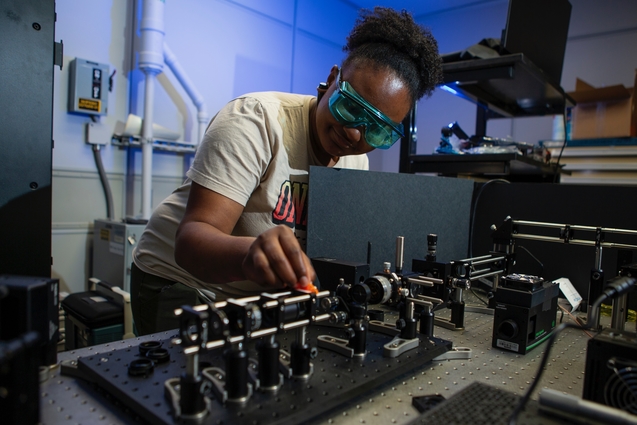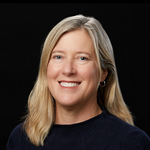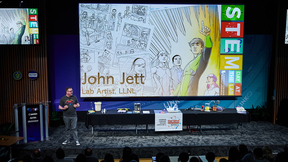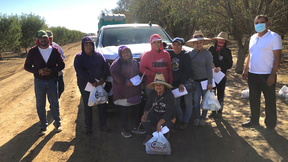NIF&PS Summer Scholar wants to inspire other students
 (Download Image)
(Download Image)
Ashleigh Wilson, a NIF&PS Summer Scholar intern, aligns a spontaneous parametric down conversion (SPDC) light source as part of her internship project. (Photo: Jason Laurea/LLNL)
When Ashleigh Wilson was growing up, she thought she would become an accountant.
Fast forward to the present — and the Norfolk State University Ph.D. candidate has just wrapped up her second year as a National Ignition Facility & Photon Science (NIF&PS) Summer Scholar Program intern at Lawrence Livermore National Laboratory (LLNL).
“When I was a child, I really didn’t think I was going to do anything with engineering,” said Wilson, who is from Little Rock, Arkansas. “But my mom used to say that I liked taking little, tiny calculators and taking them apart and putting them back together again. As far as science goes, all throughout middle school and high school, I was going to school for accounting.”
The tipping point for Wilson came in community college when she took a chemistry class.
“I loved it so much that I was like, ‘I guess I’m going to school for science now,’” she said. “So that changed my whole mindset. I just wanted to figure out more and more and more [about chemistry].”
Wilson went on to receive her undergraduate degree in chemistry, and received her master’s degree in materials science in December 2022 at Norfolk State University in Norfolk, Virginia. She is now a Ph.D. candidate in materials science and engineering.
A pivotal moment for Wilson occurred in the fall of 2021, when her Norfolk State adviser invited her to join the Consortium for Research and Education in Materials Science and Photonics Engineering (NoVEL Consortium) — and she agreed.
The NoVEL Consortium’s goal is to strengthen the research and education capabilities of three Historically Black Colleges and Universities (HBCUs) — Norfolk State University, Virginia State University and Elizabeth City State University — through the research areas of materials science and photonics. Those are topics of interest to the National Nuclear Enterprise (NSE), LLNL, and NIF&PS.
The partnership between the HBCUs and LLNL provides a resource pipeline for science, technology, engineering and mathematics (STEM) students who have been traditionally overlooked.
Wilson credited the consortium with opening her eyes to the possibilities of working at a national lab and for bolstering her career skills, such as writing a compelling resume, adding to her extracurricular and leadership accomplishments and doing her research work.
“Being in the consortium really helped me realize that you actually have the potential to do this if you just apply for it,” Wilson said. “It motivated me to realize that I could actually apply at a national lab for the summer and possibly get accepted.”
She applied to the Lab’s NIF&PS Summer Scholar Program a year ago and was accepted.
Wilson has participated in the virtual LLNL Week, the Lab’s outreach to HBCU students like herself. And, as an intern, she took part in the weeklong program at LLNL held last year for students and faculty of HBCUs to learn about internships, job opportunities and career paths.
She was among several African American students who met with the African American Body of Laboratory Employees (ABLE), one of the Lab’s employee resource groups. ABLE is an inclusive organization that provides a forum where employees and guests can promote awareness of Black, African, African American and Caribbean culture.
Last year, Wilson was tasked with the alignment and setup of a spontaneous parametric down conversion (SPDC) light source, obtaining fluorescence and imaging measurements, setting up and calibrating it with a spectrograph and conducting spectral measurements.
An SPDC light source is used to obtain entangled light that can later split. This light can be generated by nonlinear crystals, quantum dots and four-wave mixing. One common method of generation is by SPDC.
This year, she was responsible for obtaining spectral measurements and images of SPDC light at various angles and characterizing them to investigate the potential of using entangled two-photon absorbance to excite the fluorescence of tryptophan samples.
“I really wanted to come back because I had put in so much work last summer and I knew there was so much more to do,” Wilson said. “I just want to see it through to the end because I know that even if you do a lot, there’s so much more to be done. It’s just amazing that I could still come back.”
Wilson said her biggest takeaways on her project “were understanding optical setups and the importance of aligning an optical setup. Last year, the most meaningful part was understanding the different types of SPDC light and how it’s made. This year, I am starting to understand more about how SPDC light can be used.
“The work that gets done here is amazing as well because I don’t get to do this in school,” she said. “This is high-level stuff. Who knew that I enjoyed optical engineering before? It just opened my mind so much.”
Wilson had high praise for the Lab’s culture and openness.
“I love the Lab culture,” she said. “People are really nice here, people are always saying, ‘Hey, if you ever want to come and check my lab, you can always come by.’ They’re so open and willing to find your perfect niche. Because even though you apply for something as an intern or as a scholar, it might not be the perfect fit for you as much as you thought it was. Thankfully, that hasn’t happened to me. But I like how people are always willing to say, ‘Hey, you can come check out my lab.’”
As for her future, Wilson will return to Norfolk State to resume her Ph.D. program and continue her research. She says she would love to work for a national laboratory.
In her spare time, Wilson enjoys reading novels, manga, research articles, almost anything. She sometimes reads at her desk on her lunch breaks while she’s eating.
As for the Lab experience, Wilson thanked everyone who has supported her along the way.
“I’m very grateful for the people who keep mentioning my name and giving me the opportunity because, without them, I wouldn’t believe that I could do it,” she said. “But now I know that I can do it. I hope that it inspires other people that know that they can do it. I’m just so grateful for the opportunity and the experiences and the skills that I have gained. I like the knowledge I’ve gained while working here and the people that I worked with. I will keep in touch with them, hopefully, for a very long time.”
—Jon Kawamoto
Contact
 Patricia Koning
Patricia Koning
[email protected]
(925) 423-4332
Related Links
NoVEL ConsortiumTags
Lasers and Optical S&TCareers
National Ignition Facility and Photon Science
Community Outreach
Lasers
Featured Articles







